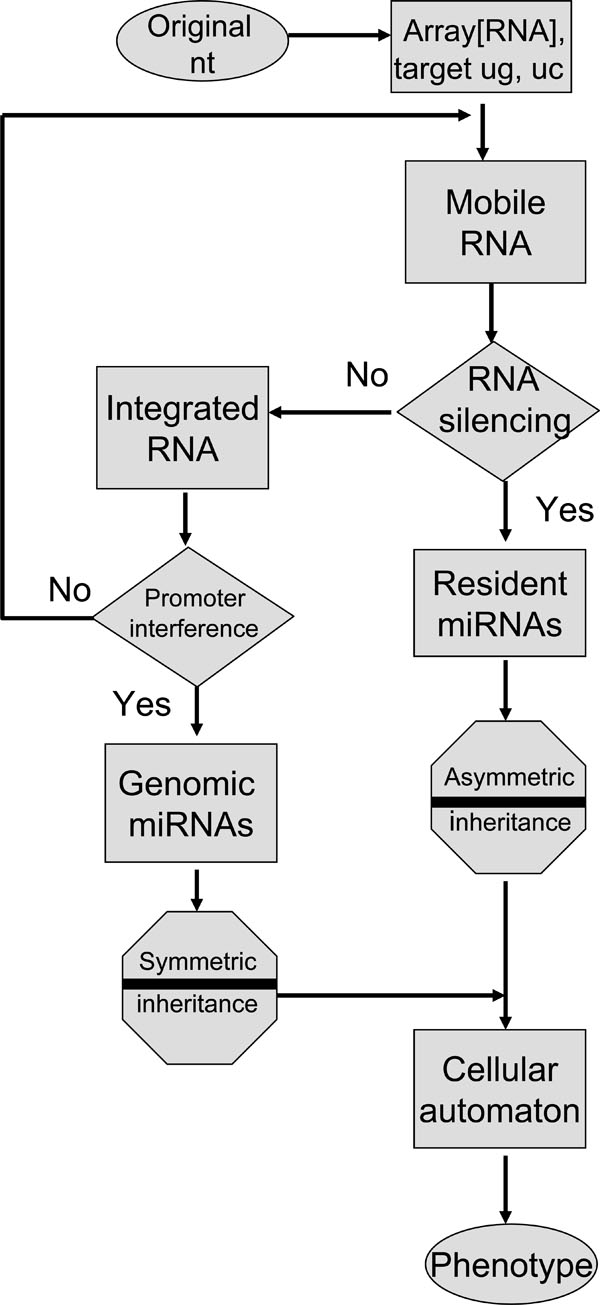Fig. (2) Mobile miRNA memory flowchart. The diagram in Fig. (1) is simplified and the resource of space (memory) for computing is shown by the algorithm. In the world of RNA, it is a well-known hypothesis that the original archaic code consists of guanine (g), cytosine (c) and uridine (u). The seed memory of miRNAs in MGE may pass through two gates after infection. One is the RNA silencing gate and the other is the promoter interference gate. When RNA memory passes through the RNA silencing gate (YES), miRNA transforms into resident miRNA as software memory. In the case of NO transformation, miRNAs in the MGEs are integrated into the host genome. When RNA memory in the genome passes through the promoter interference gate, miRNA transforms into genomic miRNA as hardware memory. The genomic miRNAs express a symmetric phenotype and the resident miRNAs express an asymmetric phenotype. Chimerical information of both miRNAs expresses individual phenotype of cells under cellular automaton. miRNA information flow may contribute to the elucidation of differentiation and evolution of cells, such as those involved in mental memory and behavioral diseases.


